|
July Article
|
Awesome Arrowhead
Take a quick peek at our Natural Shore logo. Do you happen to know what native plant represents our company? If you said broadleaf arrowhead (
Sagittaria latifolia), you're right! This plant is somewhat of an iconic component in Minnesota natural shorelands and provides a wide range of ecological benefits. Besides that, it looks pretty cool - deep, dark green, variable arrow shaped leaves and very intricate and beautiful white flowers.
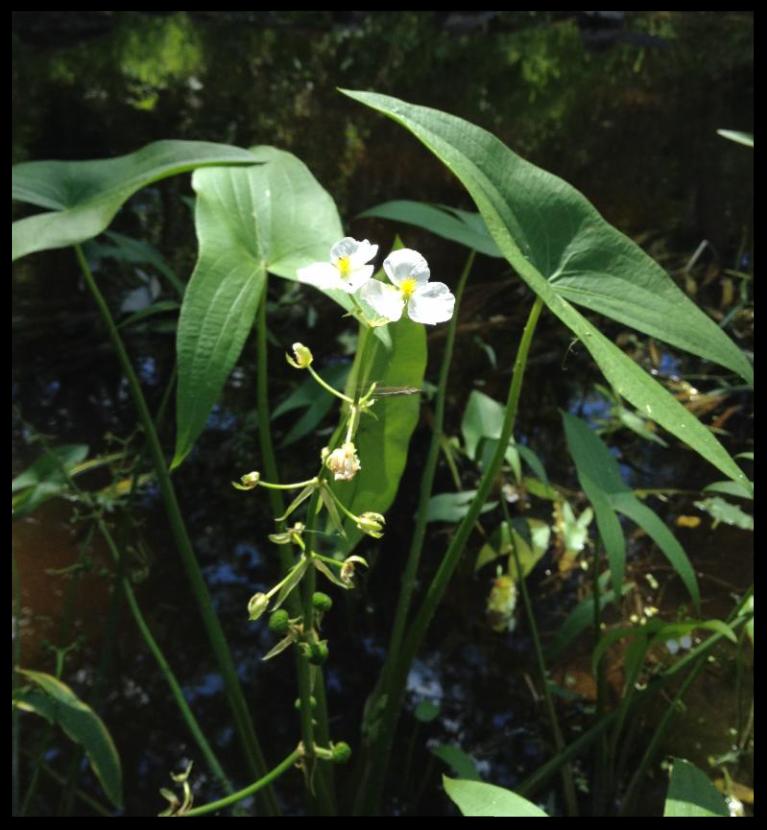 Arrowhead is a native, perennial emergent aquatic plant found throughout the United States, Canada, and parts of Mexico. It has tubers that have been used for food by Native Americans for thousands of years. It is a very nutritious food that can be stored and used throughout the winter months. Various tribes also used its leaves, flowers, and tubers for medicinal purposes - treating fevers, headaches, indigestion, rheumatism, and more! Lewis and Clark were provided arrowhead to eat on their expedition and noted that it would actually be a valuable commodity to trade.
Arrowhead gets its name from its dark green, arrow-
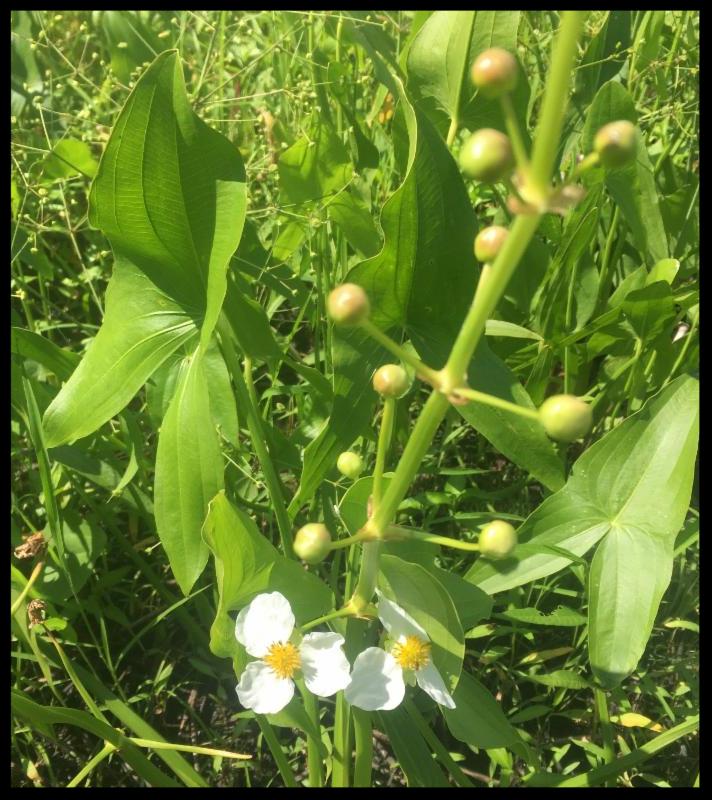 shaped leaves which have distinct veins coming from its center. Arrowhead species are in the water plantain family (Alismataceae) and prefer wet or saturated soils along banks of rivers, streams, lakes, and ponds. There are actually five Sagittaria species native to Minnesota, with varying sizes and forms of leaves. They all share the characteristic of having white flowers with three petals. Broadleaf arrowhead blooms from July to September and then forms small round clusters of seeds called achenes. Each plant can develop and produce over 20,000 achenes!
Another name for Arrowhead is duck potato. While most ducks can't reach their deep tubers, they do eat arrowhead seed. Swans, geese, and a wide variety of bird species also eat these seeds as well as other plant parts. Some mammals eat the golf-ball sized tubers including porcupines, beavers, and muskrats. Muskrats sometimes hoard large caches of the tubers in their houses. Even snapping and painted turtles have been seen eating arrowhead. Their small white flowers are also used by many bee, fly, and butterfly species as a nectar and pollen source!
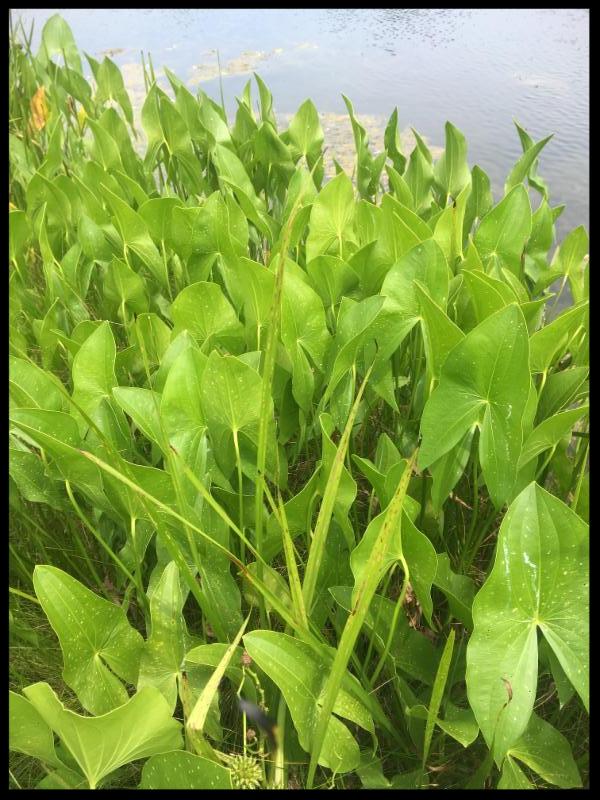
This plant is an incredibly helpful tool in shoreline restoration. It typically does well along shores with low wave energy and rich, organic soils. It creates excellent habitat and helps break up waves and slows water down right along the shore. It also locks lake-bottom sediments in place and absorbs nutrients like phosphorus and nitrogen.
We have been extremely fortunate to have had the

opportunity to grow and introduce this species to hundreds of shorelines around the state. It has substantially improved critical shoreline habitat, and does it in a very beautiful and attractive way. To us, it's a symbol of quality natural shorelines and represents our company in an elegant and simple way - thanks arrowhead!
If you want to know more about this amazing plant or other shoreline and prairie species, come visit our retail nursery and tap the brains of our exceptional staff.
|
|
Native Plant of the Month
|
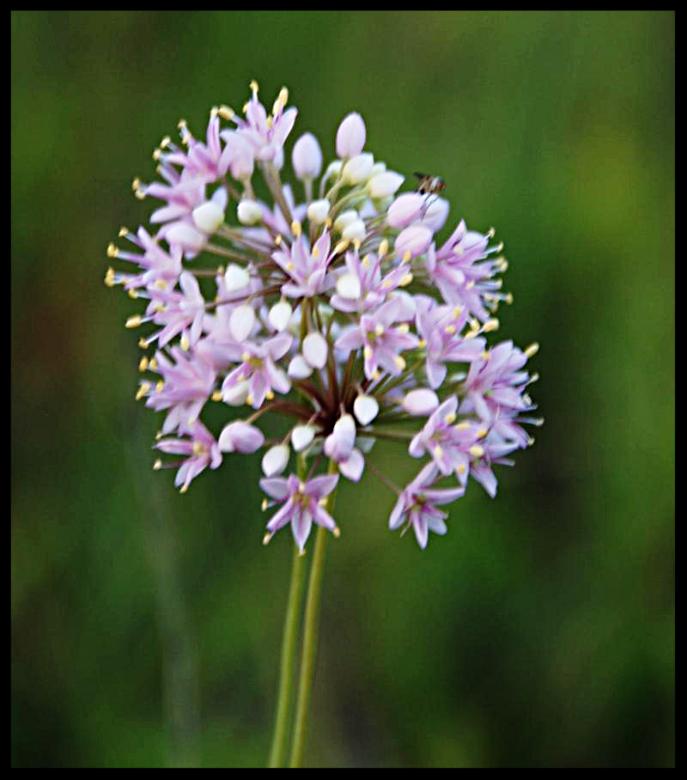
Prairie Onion
Allium stellatum
Moisture: Moist or Dry
Exposure: Full Sun or Partial Shade
Color: Lavender
Blooms: July-August
Height: 1-2 Feet
This native plant looks like a fourth of July firework! Prairie onion has long, grass-like leaves topped with a brilliant purple globe of flowers, with a strong onion scent. Their oval-shaped bulb is covered with a papery outer coat. Their flower stalks with erect clusters of pink star-like flowers are attractive to small bees, flies, and butterflies. Prairie onion grows naturally in prairies, and dry, sandy or gravelly soil. Propagation is mostly by seeds and bulbs. Their black seeds are contained in chambers that are picked open by birds and small mammals for food. Other common names are cliff onion and prairie wild onion.
|
|
Invasive Plant of the Month
|
Queen Ann's Lace
 (Daucus carota)
(Daucus carota)
Exposure: Full Sun or Partial Shade
Color: White
Blooms: June-September
Height: 1-4 Feet
Queen Ann's Lace is also known as wild carrot and is a perennial from Europe. It is often found along roadsides or areas with disturbed soils. It has a large white umbel-shaped cluster of small white flowers that look like lace. Leaves are compound, dark green, and look similar to carrot tops found in the vegetable gardens. Management strategies include hand-pulling and weed whipping plants to prevent them from developing and spreading mature seed.
|
Great Spangled Fritillary 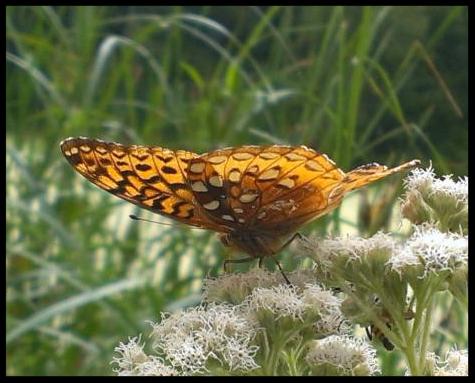
Speyeria cybele
Range
: Most common in Eastern United states but has populations throughout the United States and Southern Canada
Habitat
: Open areas like fields, prairies, pastures, and roadsides.
Identification
: A burnt-orange butterfly with white and black spots.
Pollination
:
Milkweed species, ironweed, boneset, joe-pye weed, purple coneflower, bergamot, and many more!
|
|
|
Our retail nursery is open the following dates:
Thurs. July 26th- Sat. July 28th
Thurs. Aug. 23rd- Sat. Aug. 25th
Our retail nursery address is:
1480 County Rd. 90 Independence MN 55359
Click and visit our website for current
|
|
Red, White, and Blue!
Feeling patriotic this month? Here are five plants that will add some Red, White, and Blue to your restoration!
1. Cardinal Flower
(
Lobelia cardinalis)
2. Blue Lobelia
(
Lobelia siphilitica)
3. White Prairie Clover
(
Dalea candida)
4. Columbine
(
Aquilegia canadensis)
5. Sky Blue Aster
(
Symphyotrichum oolentangiense)
Want to learn more about these native plants? Click Here to visit our website!
|
|
Mystery Plant of the Month!
|
|
Test your plant ID skills!
Here is a lovely prairie plant that gets a lot of attention when it blooms each season. See if you can't figure out what it is!
Need another clue?
Take a closer look at this picture of its interesting seed head!
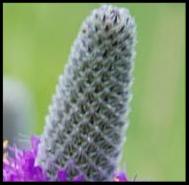
|
|
 |
|